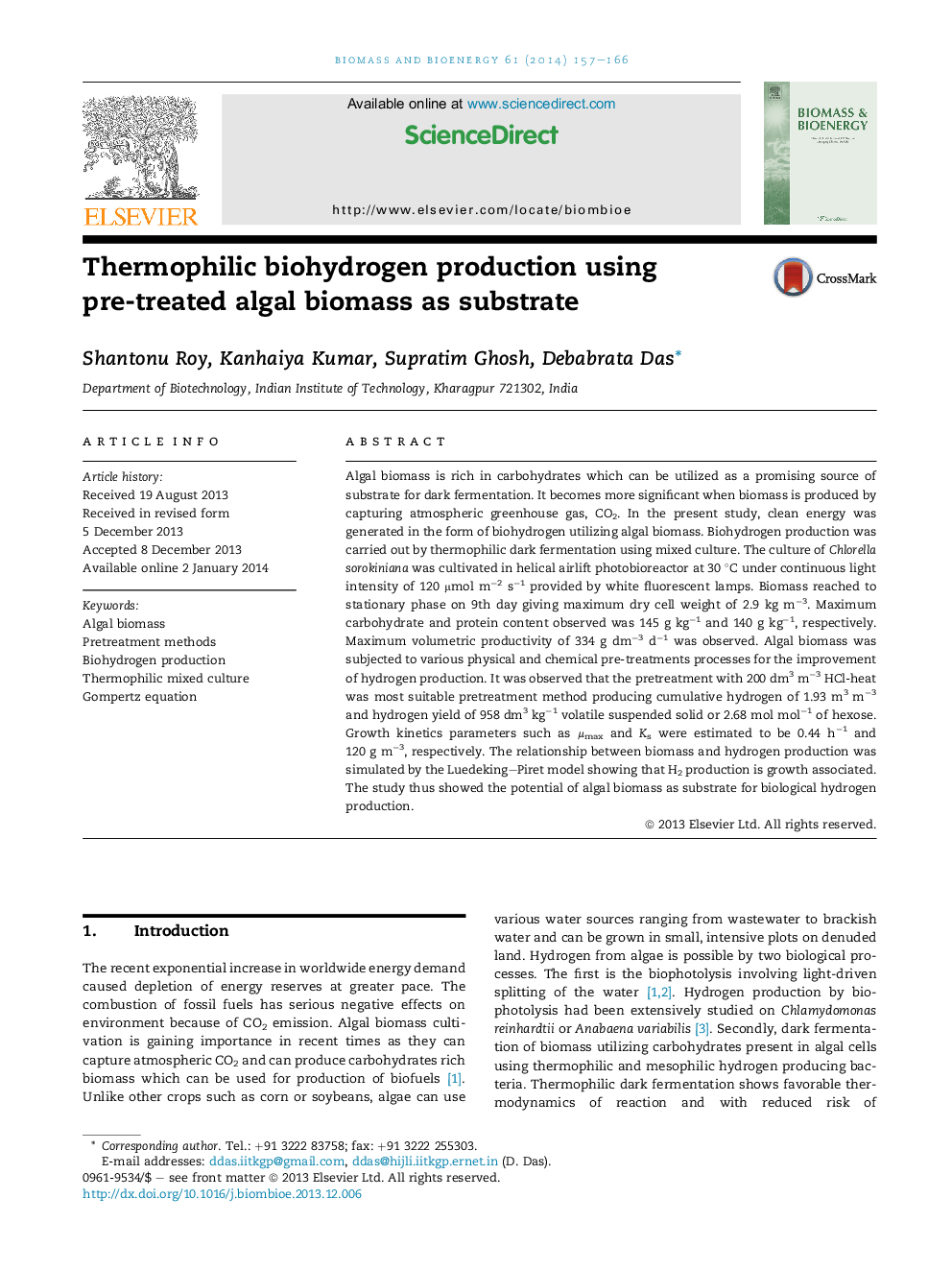| Article ID | Journal | Published Year | Pages | File Type |
|---|---|---|---|---|
| 676957 | Biomass and Bioenergy | 2014 | 10 Pages |
Abstract
Algal biomass is rich in carbohydrates which can be utilized as a promising source of substrate for dark fermentation. It becomes more significant when biomass is produced by capturing atmospheric greenhouse gas, CO2. In the present study, clean energy was generated in the form of biohydrogen utilizing algal biomass. Biohydrogen production was carried out by thermophilic dark fermentation using mixed culture. The culture of Chlorella sorokiniana was cultivated in helical airlift photobioreactor at 30 °C under continuous light intensity of 120 μmol mâ2 sâ1 provided by white fluorescent lamps. Biomass reached to stationary phase on 9th day giving maximum dry cell weight of 2.9 kg mâ3. Maximum carbohydrate and protein content observed was 145 g kgâ1 and 140 g kgâ1, respectively. Maximum volumetric productivity of 334 g dmâ3 dâ1 was observed. Algal biomass was subjected to various physical and chemical pre-treatments processes for the improvement of hydrogen production. It was observed that the pretreatment with 200 dm3 mâ3 HCl-heat was most suitable pretreatment method producing cumulative hydrogen of 1.93 m3 mâ3 and hydrogen yield of 958 dm3 kgâ1 volatile suspended solid or 2.68 mol molâ1 of hexose. Growth kinetics parameters such as μmax and Ks were estimated to be 0.44 hâ1 and 120 g mâ3, respectively. The relationship between biomass and hydrogen production was simulated by the Luedeking-Piret model showing that H2 production is growth associated. The study thus showed the potential of algal biomass as substrate for biological hydrogen production.
Related Topics
Physical Sciences and Engineering
Chemical Engineering
Process Chemistry and Technology
Authors
Shantonu Roy, Kanhaiya Kumar, Supratim Ghosh, Debabrata Das,
